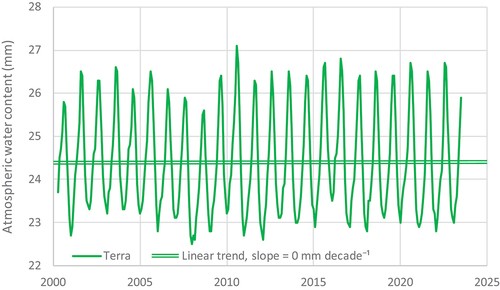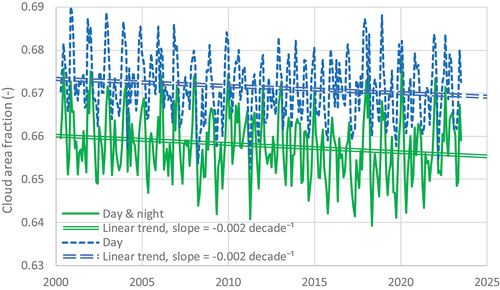Figures & data
Figure 1. Timeline of the observation periods of the eight datasets (not to scale) and atmospheric CO2 concentration according to Meinshausen et al. (Citation2020). The CO₂ concentration data were downloaded from https://gmd.copernicus.org/articles/13/3571/2020/gmd-13-3571-2020-supplement.zip (accessed 25 August 2023); from the Microsoft Excel file provided at that URL, the data from the column “CO2 ppm World” of the tabs “T2 – History Year 1750 to 2014” were retrieved.

Table 1. Details of the eight datasets used in the study and information about their retrieval.
Figure 2. Plot of downward radiation of the atmosphere La calculated by Brutsaert’s formula with its original parameters (EquationEquation (4)(4)
(4) ) vs. measured La in all eight datasets. The points correspond to individual measurements, while the lines correspond to reconstructions by envelopes, as described in and Appendix A. For the two datasets with the largest number of points (Aase and Idso Citation1978 and Carmona et al. Citation2014), the linear regression lines are also shown in the figure, along with their equations.
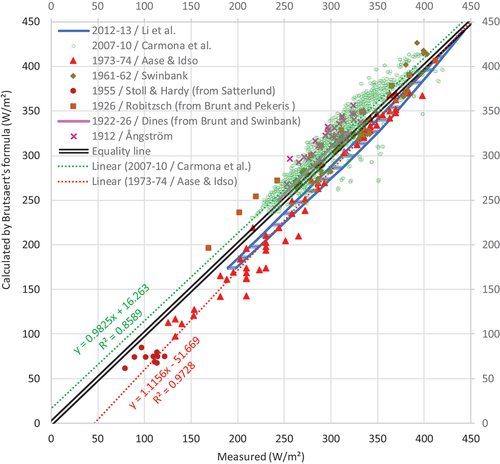
Table A1. Parameters and
of the generalized Brutsaert formula,
, as recalibrated by Carmona et al. (Citation2014) and Li et al. (Citation2017), and the resulting relative RMSE of the fitting as reported in these publications.
Figure A1. Cross-check of the reconstruction by envelopes based on the Carmona et al. (Citation2014) dataset, for which both the original points and the envelopes are shown. The reconstruction of Li et al. (Citation2017) is also shown for comparison. The graph is similar to that of , showing the downward radiation of the atmosphere La calculated by the Brutsaert formula with its original parameters (EquationEquation (4)(4)
(4) ), vs. measured or reconstructed La, but only for the two indicated sets. The points correspond to individual measurements, while the lines correspond to reconstructions by envelopes.
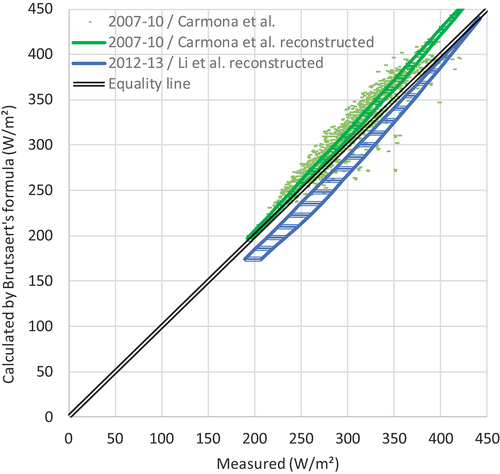
Figure B1. TOA time series of longwave radiation fluxes, as provided by NASA’s CERES, along with linear trend, for (a) all sky and (b) clear sky.

Figure B2. TOA time series of shortwave radiation flux, as provided by NASA’s CERES, along with linear trend, for all sky.
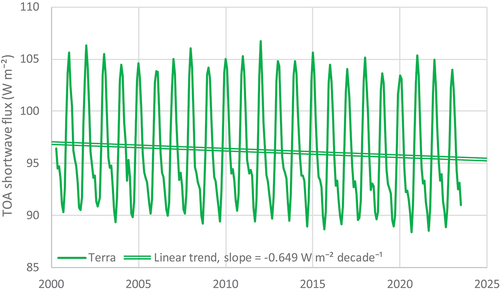
Figure B3. Atmospheric water content (precipitable water), as provided by NASA’s CERES, along with linear trend (which in this case does not exist).
